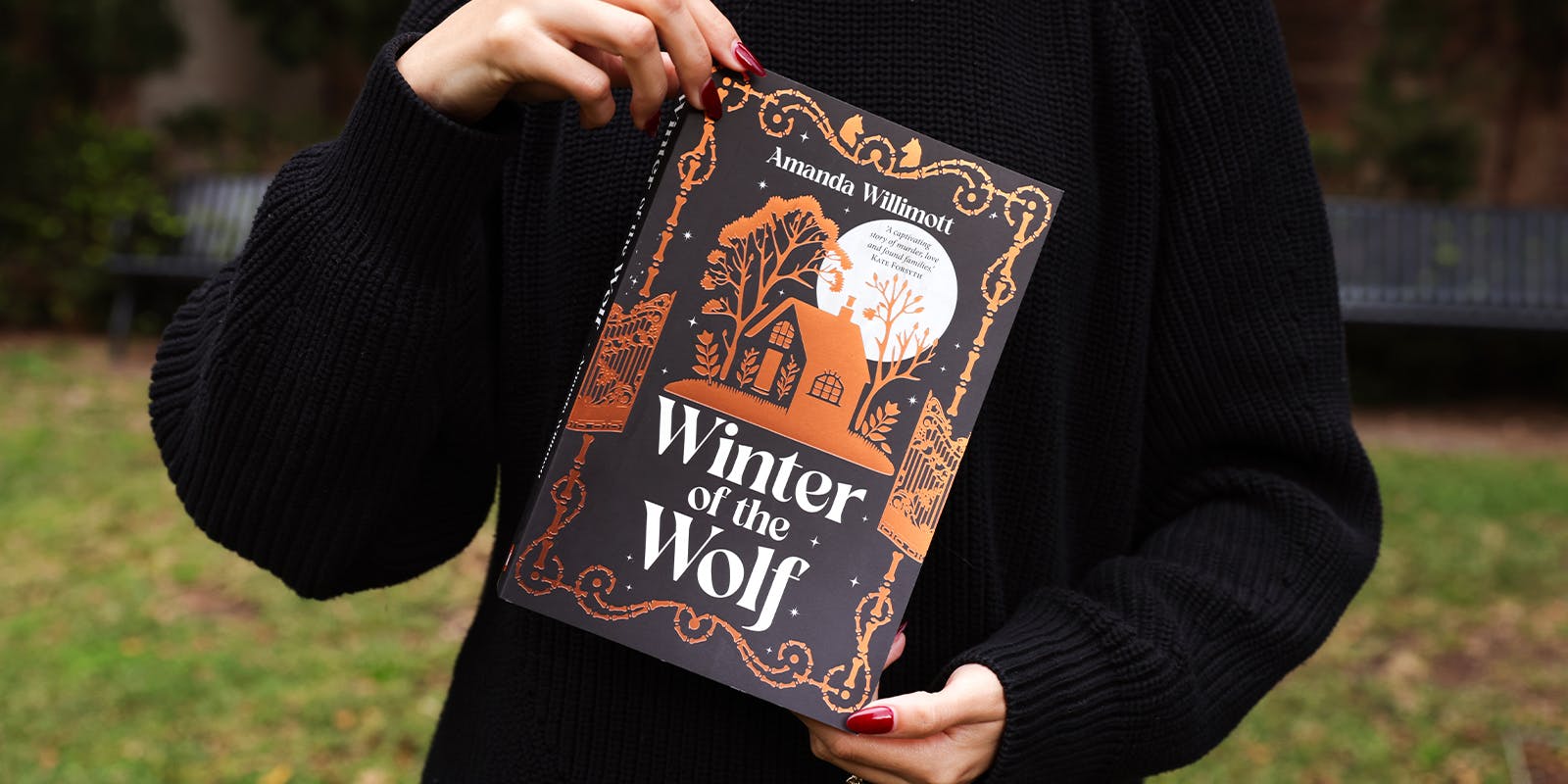A gripping debut that blends history with paranormal and feminist themes, with a moving queer romance at its core.
Amanda Willimott’s debut novel Winter of the Wolf is a gripping historical fiction read based on a real werewolf trial.
Set in Eastern France in the late 1500s, Sidonie flees Paris, finding herself in the town of Dole – a place consumed by fear and superstition. Meanwhile, Apolline hopes for a new life, selling herbs and helping women from the privacy of her forest home.
When the two women’s lives become intertwined, they find themselves being hunted. With rumours about a child-hunting werewolf in town, the flames of fear and hatred burn strong in Dole, and the two women might just find themselves on the wrong side of speculation.
Thrilling, moving and totally addictive, it’s the perfect book to read with your book club. These book club questions will spark conversation and help your book club dive deeper into the themes and characters between the pages of Winter of the Wolf.
WARNING: Spoilers ahead!
Discussion points and questions
- At school, through texts such as The Crucible, we studied witch trials and were asked to examine their contemporary resonance. But did you know there were also werewolf trials?
- Why do some elements of society find it frightening when women (both in the past and present) go their own ways in life, perhaps by offering their services as healers, employers, teachers and caregivers; choose to live with women instead of men and so on?
- When challenged about the missing women and children of the region, to turn the spotlight from themselves, the Church incites a vigilante hunt for a werewolf perpetrator. Hysteria rises and conspiracy theories abound. Add to the Church, the media, politicians or some other part of society with a voice, swap out the werewolf for another stranger or unknown, and it sounds a bit like any moment in history. Doesn’t it?
- Sidonie arrives at the estate of her wealthy aunt Eloise, who lives with her companion, Liane, and servants. There are a lot of women, young boys and girls living at the estate. Given the missing children and women add fuel to the werewolf theories, are Liane and Eloise right to provide them refuge, without telling the families or the law officers what they are doing?
- How does class and wealth play out across the novel?
- Why do you think people, from across society, turned up to watch executions?
- Was Apolline making the right decision to avert Gilles from his distress at his deceased child so often?
- What is it exactly that Pierre is trying to prove to his father and broader society?
- Some may view Apolline as a vigilante at the end of the novel. How did you receive her actions?
- Sidonie struggles to recall her childhood memories, and it takes her some time to remember her connection to Apolline. What do you think this suggests about the interplay between trauma and memory?
- How do the core female relationships in the novel – Sidonie and Apolline; Eloise and Liane – contrast or mirror each other?
- For much of the novel, Sidonie is in two minds about forming an attachment with, and potentially marrying, Olivier. What societal pressures might have influenced her indecision?
Interested? Start reading it here.














